 W
WIn the ancient Greek myths, ambrosia is the food or drink of the Greek gods, often depicted as conferring longevity or immortality upon whoever consumed it. It was brought to the gods in Olympus by doves and served by either Hebe or Ganymede at the heavenly feast.
 W
WBouillabaisse is a traditional Provençal fish stew originating in the port city of Marseille. The French and English form bouillabaisse comes from the Provençal Occitan word bolhabaissa, a compound that consists of the two verbs bolhir and abaissar.
 W
WCheesecake is a sweet dessert consisting of one or more layers. The main, and thickest, layer consists of a mixture of a soft, fresh cheese, eggs, and sugar. If there is a bottom layer, it most often consists of a crust or base made from crushed cookies, graham crackers, pastry, or sometimes sponge cake. Cheesecake may be baked or unbaked.
 W
WThe Deipnosophistae is an early 3rd-century AD Greek work by the Greek author Athenaeus of Naucratis. It is a long work of literary, historical, and antiquarian references set in Rome at a series of banquets held by the protagonist Publius Livius Larensis for an assembly of grammarians, lexicographers, jurists, musicians, and hangers-on. It is sometimes called the oldest surviving cookbook.
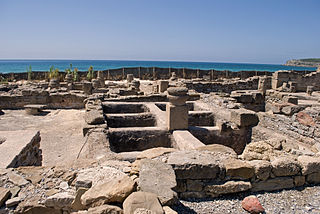 W
WGarum is a fermented fish sauce which was used as a condiment in the cuisines of Phoenicia, ancient Greece, Rome, Carthage and later Byzantium. Liquamen is a similar preparation, and at times they were synonymous. Although garum enjoyed its greatest popularity in the Western Mediterranean and the Roman world, it was earlier used by the Greeks.
 W
WKykeon was an Ancient Greek drink of various descriptions. Some were made mainly of water, barley and naturally occurring substances. Others were made with wine and grated cheese. It is widely believed that kykeon usually refers to a psychoactive compounded brew, as in the case of the Eleusinian Mysteries. A kykeon was used at the climax of the Eleusinian Mysteries to break a sacred fast, but it is also mentioned as a favourite drink of Greek peasants.
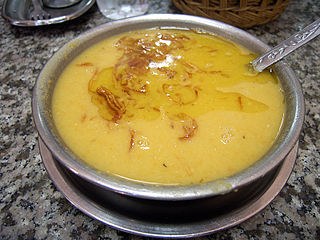 W
WLentil soup is a soup based on lentils; it may be vegetarian or include meat, and may use brown, red, yellow, green or black lentils, with or without the husk. Dehulled yellow and red lentils disintegrate in cooking, making a thick soup. It is a staple food throughout Europe, Latin America and the Middle East.
 W
WLoukaniko is a type of Greek sausage made from pork or lamb and typically flavored with orange peel, fennel seed, and various other dried herbs and seeds, and sometimes smoked over aromatic woods. They are also often flavored with greens, especially leeks.
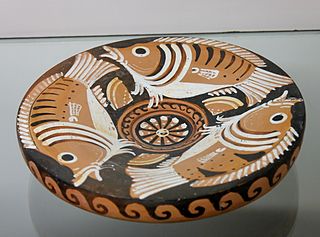 W
WClassical antiquity is the period of cultural history spanning from the 8th century BC to the beginning of the Middle Ages. The major civilizations are those of the Mediterranean region, ancient Greece, ancient Rome, and southwest Asia. Nutrition consisted of simple fresh or preserved whole foods that were either locally grown or transported from neighboring areas during times of crisis. Physicians and philosophers studied the effect of food on the human body and they generally agreed that food was important in preventing illness and restoring health.
 W
WA pancake is a flat cake, often thin and round, prepared from a starch-based batter that may contain eggs, milk and butter and cooked on a hot surface such as a griddle or frying pan, often frying with oil or butter. Archaeological evidence suggests that pancakes were probably the earliest and most widespread cereal food eaten in prehistoric societies.
 W
WPita or pitta, is a family of yeast-leavened round flatbreads baked from wheat flour, common in the Mediterranean, Middle East, and neighboring areas. It includes the widely known version with an interior pocket, also known as Arabic bread, Syrian bread and other names, as well as pocketless versions such as the Greek pita, used to wrap souvlaki. The Western name pita may sometimes be used to refer to various other types of flatbreads that have different names in their local languages, such as numerous styles of Arab khubz (bread).
 W
WPlacenta cake is a dish from ancient Greece and Rome consisting of many dough layers interspersed with a mixture of cheese and honey and flavored with bay leaves, baked and then covered in honey. The dessert is mentioned in classical texts such as the Greek poems of Archestratos and Antiphanes, as well as the De agri cultura of Cato the Elder.
 W
WRetsina is a Greek white resinated wine, which has been made for at least 2,000 years. Its unique flavor is said to have originated from the practice of sealing wine vessels, particularly amphorae, with Aleppo Pine resin in ancient times. Before the invention of impermeable glass bottles, oxygen caused many wines to spoil within the year. Pine resin helped keep air out, while infusing the wine with resin aroma. The Romans began to use barrels in the 3rd century AD, removing any oenological necessity for resin, but the flavor itself was so popular that the style is still widespread today.
 W
WRose water is a flavoured water made by steeping rose petals in water. Additionally, it is the hydrosol portion of the distillate of rose petals, a by-product of the production of rose oil for use in perfume. Rose water is also used to flavour food, as a component in some cosmetic and medical preparations, and for religious purposes throughout Asia and Europe.
 W
WSesame seed candy is a confection of sesame seeds and sugar or honey pressed into a bar or ball. It is popular from the Middle East through South Asia to East Asia. The texture may vary from chewy to crisp. It may also be called sesame (seed) candy/bar/crunch; sesame seed cake may refer to the confection or to a leavened cake or cookie incorporating sesame.
 W
WSilphium is an unidentified plant that was used in classical antiquity as a seasoning, perfume, aphrodisiac, and medicine. It also was used as a contraceptive by ancient Greeks and Romans. It was the essential item of trade from the ancient North African city of Cyrene, and was so critical to the Cyrenian economy that most of their coins bore a picture of the plant. The valuable product was the plant's resin.
 W
WSkordalia or skordhalia or skorthalia, is a thick purée in Greek cuisine traditionally made by combining crushed garlic with a bulky base —which may be a purée of potatoes, walnuts, almonds or liquid-soaked stale bread—and then beating olive oil in to make a smooth emulsion, to which some vinegar is added.
 W
WTarhana is a dried food ingredient, based on a fermented mixture of grain and yoghurt or fermented milk, found in the cuisines of Southeast Europe and the Middle East. Dry tarhana has a texture of coarse, uneven crumbs, and it is usually made into a thick soup with water, stock, or milk. As it is both acidic and low in moisture, the milk proteins keep for long periods. Tarhana is very similar to some kinds of kashk.
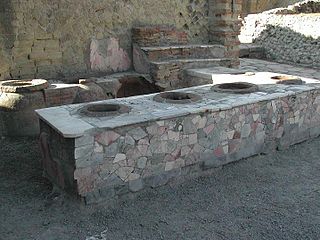 W
WIn the ancient Greco-Roman world, a thermopolium, from Greek θερμοπώλιον (thermopōlion), i.e. cook-shop, literally "a place where (something) hot is sold", was a commercial establishment where it was possible to purchase ready-to-eat food. In Latin literature they would also be called popinae, cauponae, hospitia or stabula, but archaeologists call them all thermopolia. Thermopolia being the forerunners of today's restaurant, the items served are sometimes compared to modern fast food. These places were mainly used by those who simply could not afford a private kitchen, often inhabitants of insulae, sometimes leading them to be scorned by the upper class.
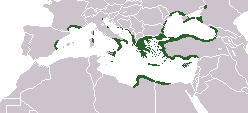 W
WThe influence of wine in ancient Greece helped ancient Greece trade with neighboring countries and regions. Many mannerisms and cultural aspects were associated with wine. It led to great change in Ancient Greece as well.The peoples of the Mediterranean began to emerge from barbarism when they learned to cultivate the olive and the vine.
 W
WCretan wine is wine from the Greek island of Crete. It has a long history since wine was certainly being made by the Minoans since the Bronze Age. Wines from Crete are not listed among those specially prized in classical Greece, but under the Roman Empire in the 2nd century AD Crete was known for a sweet wine, protropos, which was exported to Italy.
 W
WLesbos wine is wine made on the Greek island of Lesbos in the Aegean Sea. The island has a long history of winemaking dating back to at least the 7th century BC when it was mentioned in the works of Homer. During this time the area competed with the wines of Chios for the Greek market. An apocryphal account details one of the brothers of the poet Sappho as a merchant trading Lesbos wine with the Greek colony of Naucratis in Egypt. The most noted Lesbos wine was known as Pramnian which draws similarities today to the Hungarian wine Eszencia. The popularity of Lesbos wine continued into Roman times where it was highly valued along with other Aegean wines of Chios, Thasos and Kos.